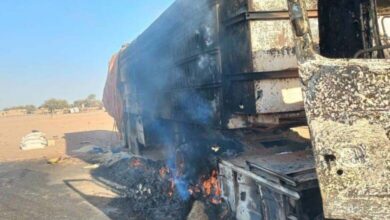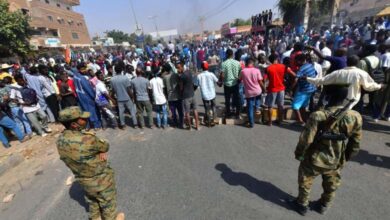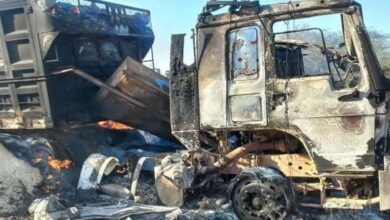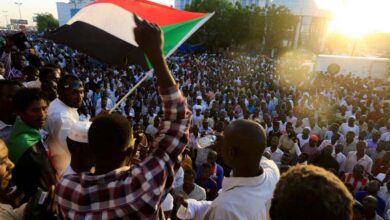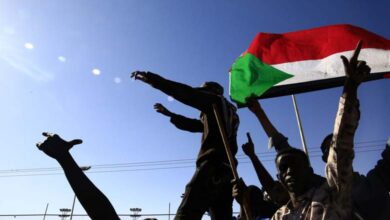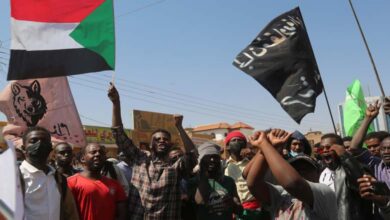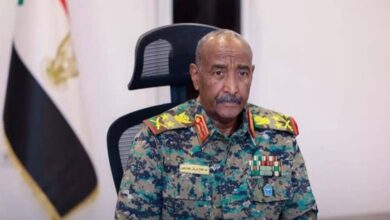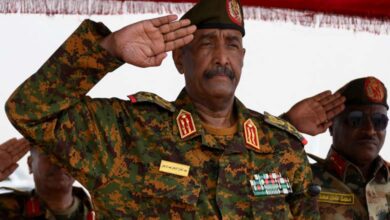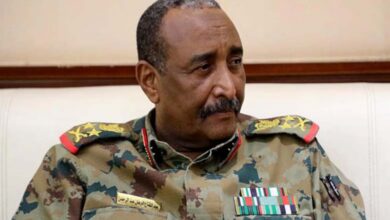Goals of the Tehran regime in its relentless expansion attempts in Sudan

Military cooperation between Sudan and Iran
The Iranian transcontinental threat is rapidly advancing to expand into various regions where Tehran seeks to establish a foothold. Within the framework of its quest to create spheres of influence and new points of contact with global powers, Iran aims to confront and manipulate them, stretching from the Middle East to North Africa and the coast. This expansion relies on two parallel strategies: support for separatist political movements and terrorist organizations, both financially and logistically, and the spread of Shia ideology.
The Iranian regime focuses its scheme aimed at infiltrating regions where it seeks to enhance its influence by exploiting areas of tension and conflict. Currently, this strategy is being implemented in North Africa and the African coast, through supporting separatist entities and terrorist organizations as a means to encircle emerging regional powers and negotiate with major players on the international stage.
What are Tehran’s goals in its vigorous expansion attempts in Africa and the coast, after destabilizing several countries in the Middle East like Iraq, Yemen, and Syria, and threatening the stability and security of other countries in the Gulf? To what extent will the international powers continue to turn a blind eye to the Iranian threat’s expansion in the region? What are the potential consequences if immediate action is not taken to address it?
Military cooperation between Sudan and Iran resumed months after the official restoration of relations between them in October 2023, following a seven-year hiatus. Tehran supplied the Sudanese army with drones.
The Saudi-Iranian agreement, mediated by China, eased the pressure on Khartoum by resuming its relations with Tehran, after Sudan severed ties with the Islamic Republic following the invasion of the Saudi embassy in January 2016.
This cooperation coincides with the ongoing conflict between the Sudanese army and the Rapid Support Forces, raising concerns among some Gulf countries, especially Egypt, Saudi Arabia, and the United States, as Iran seeks a foothold in the Red Sea and penetration into the Horn and African coast through Sudan.
A Sudanese Ministry of Defense advisor mentioned that “military cooperation between our country and Iran is not as comprehensive as it was before the severance of relations between the two states, especially as they have not exchanged diplomatic representation or opened embassies.”
The advisor, who requested anonymity, revealed that “the army has sought to enhance its capabilities in recent months to confront armed rebellion by the Rapid Support Forces, purchasing weapons and drones from several countries, including Iran.”
He further explained that “US sanctions on Sudan, and the blockade imposed on the country for over two decades during the era of ousted President Omar al-Bashir, prompted Khartoum to seek military cooperation with Eastern countries. Sudan has also entered into defense industry partnerships, with Iran being one of those countries.”
The Sudanese official added, “Our forces have made progress in defense industries over the past two decades, exporting weapons and military equipment to Arab and African countries and participating in military industry exhibitions in the UAE, South Africa, and elsewhere.”
Platforms close to the Sudanese army have been reporting on the expanding use of drones in recent weeks, simultaneously targeting Rapid Support Forces‘ objectives in Khartoum, Al Jazeera state, West Kordofan, and Darfur, where the Rapid Support Forces hold sway.
The same platforms reported that the new drones used by the army are sophisticated and highly accurate, inflicting significant losses on the Rapid Support Forces, enabling the army to make progress in Khartoum.
Observers and military experts have noted the Sudanese army‘s recent use of drones, mostly Chinese, Turkish, and Iranian, alongside various models of Russian fighter jets.
According to Bloomberg, Western officials stated that Iran provided the Sudanese army with “Mohajer 6” drones, qualified for surveillance and explosives transport. Satellite images captured last month showed an Iranian “Mohajer 6” drone at the Wadi Sayyidna base north of Omdurman, under army control.
Three Western officials, requesting anonymity, stated, “Sudan received shipments of the Mohajer 6 drones, single-engine drones manufactured in Iran by the Qods Aviation Industries Company, carrying guided ammunition.” These are the same drones the United States accused Iran of supplying to Russia during the war with Ukraine.
Tactical or Strategic?
Military expert retired Brigadier General Mazen Ismail believes that Iranian drones have proven their effectiveness in the Russo-Ukrainian war, and the results of the Sudanese army‘s use of them have emerged in recent weeks.
He stated, “Military cooperation with Iran will compensate for the Sudanese army‘s loss of weapon and ammunition stocks in the ongoing war for about 10 months, as well as the halt of Sudanese defense industries since the battles began in Khartoum.”
The military expert believes that the resumption of Sudanese-Iranian cooperation comes amid complex geopolitical conditions, stretching from Iran to Yemen, Iraq, Syria, and Lebanon, adding that “Sudan’s alliance with Iran does not serve national interests at the strategic level.”
Tehran views Sudan geopolitically in a strategic manner, based on its interest in obtaining a foothold on the shores of the Red Sea and using Sudan as a gateway to Eastern Africa and the West African coast to enhance its influence in the region. This raises concerns for some Gulf countries and Egypt, amidst the American, Russian, and Chinese Gulf competition over the region.


